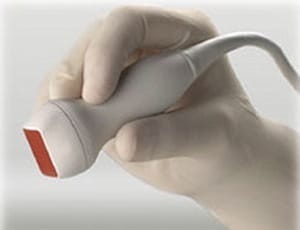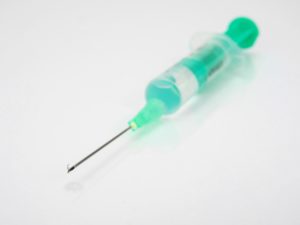Extensive upper limb venous thrombosis

“We report 2 cases of diagnosis of DVT that resulted from ultrasound for difficult peripheral venous access” Harms and Cushman (2021).
Vascular access team placement for medical students

“The multimodal course developed by the radiology department consisted of four didactic lectures, four simulation sessions, and a minimum of 16 clinical rotation hours with the department’s vascular access team” Boggs et al (2021).
OPAT antimicrobial stability

“Some drugs identified in our review are unlikely to be suitable for continuous infusion in OPAT services due to instability” Jenkins et al (2021).
IM injection simulator – Full Text

“We had developed an inexpensive intramuscular (IM) injection simulator and gathered feedback from Canadian hospital-based practicing nurses about the design features of the simulator” Micallef et al (2021).
Infusion site for maternal resuscitation

“Therefore, despite a lack of evidence, it seems logical to secure the infusion route above the diaphragm when resuscitating a pregnant woman” Nakamura et al (2021).
SVC syndrome in children

“This case of delayed diagnosis highlights the importance of investigating SVC syndrome as a potential cause of respiratory distress and edema in any patient with a history of central venous catheter placement or similar procedures” Miller and Cervantes (2021).
Midline catheter in critical care

“The midline catheter has had a resurgence in use because of the need for a long-term peripheral vascular access device not linked to central catheter-associated bloodstream infection risk” Nickel (2021).
Unsafe insulin needle disposal

“Improperly discarded medical sharps can cause needlestick injuries in unsuspecting individuals and thereby pose a considerable public health risk” Thompson and Cook (2021).
Care of pediatric and neonatal vascular access – Virtual Roundtable

“AVA would like to give a special thanks to Adhezion Biomedical and Gus Gear, the sponsors of this special edition focusing on the care of pediatrics and neonates” AVA (2021).
Brachiocephalic vein access in children

“Another central venous cannulation option in neonates and children has been supraclavicular ultrasound-guided cannulation of the brachiocephalic vein using the in-plane approach” Acosta and Tusman (2021).
Accidental epidural catheter infusion of potassium

“An infusion of 100 cc of 0,2% potassium chloride was accidental performed through a thoracic epidural catheter, inserted to perioperative analgesia, to a 66 years old man who was scheduled for right hemicolectomy, 48 h after surgery” Schwartzmann et al (2021).
IV catheter care in pediatric patients

“Pediatric nurses were largely confident in their skills but this was not reflected in their knowledge scores” Indarwati et al (2021).
Lower limb vascular access

“This technique has certain advantages over deep venous catheterisation and is an effective choice for venous access” Li et al (2021).
Unjustified peripheral IV access in ED – Full Text

“The guidelines specified when PIVI was justified (life-threatening emergency, need for an exclusive intravenous drug with no oral alternative, impossibility to administer oral medication, need to maintain an empty stomach) or unjustified (KVO, “just in case”, to collect a blood sample)” Noel et al (2021).
Community subcutaneous infusion

“The practice of anticipatory CSCI prescribing and administration can be safe in the community non-specialist setting when supported by clinical guidelines, specialist advice and ongoing multiprofessional education” Coyle et al (2021).
Central venous catheter salvage

“CVC salvage was often attempted and was frequently successful in ambulatory pediatric patients presenting with CLABSI” Ford et al (2021).
CLABSI in the emergency department

“In this study, the incidence of infection was no different between lines placed in the ED compared to the ICU” Inhofer et al (2021).
Prone position central venous access

“The authors describe three cases of successful ultrasound-guided internal jugular vein cannulation in prone position” Lima and Cheung (2021).
P wave variation and PICC tip location – Full Text

“The accuracy of the ECG characteristic map in guiding the location of the PICC tip is higher than that of the non-characteristic P wave, and it has more clinical significance in locating the best position of the PICC tip” Dong et al (2021).
Short term vascular access safety

“In this cohort study among patients with placement of midline catheters vs PICCs for short-term indications, midlines were associated with a lower risk of bloodstream infection and occlusion compared with PICCs” Swaminathan et al (2021).
Ideal intraosseous insertion site in neonates

“Therefore, the aim of this study was to determine the ideal intraosseous insertion site distal to the epiphyseal growth plate in neonates” van Tonder et al (2021).
Vascular access nursing care

“This study supports that continuous training interventions can produce improvements in the quality of nursing care and reduce complications in patients with vascular accesses” Casanova-Vivas et al (2021).
Phantoms for ultrasound guided cannulation training

“Modified mixtures of PVA are found to best serve as high-fidelity cannulation phantoms” Jafary et al (2021).
Peripherally Inserted Central Catheters – Free Webinar

“Teleflex Vascular Clinical and Medical Affairs present a webinar on the topic of Peripherally Inserted Central Catheters: Device Selection, Insertion, Use and Maintenance”
Ultrasound and near-infrared improve pediatric PIVC insertion

“Ultrasound and near-infrared appear to improve pediatric PIVC insertion. High-quality studies examining the full extent of techniques and technologies are needed” Kleidon et al (2021).
Patency of totally implantable vascular access devices

“Our principle is to study non-mechanical effects of type and initiation time of chemotherapy among the other factors on patency of totally implantable vascular access devices (TIVAD) inserted in patients with colorectal carcinoma” Aribas et al (2021).
Integrated and short peripheral catheter comparison

“ISPCs can yield the same results with that of SSPCs while being easier to use and less costly” Cura (2021).
Intraosseous infusion simulator for neonatal resuscitation

“From this feedback, a functional and cost-effective simulator was developed to practice this HALO skill and is currently being used for NRP training” Micallef et al (2021).
Retrieval of fractured cannula from cephalic vein – Full Text

“We have reported a case of a broken piece of a cannula in the cephalic vein removed with the help of a Fogarty catheter with the emphasis on preoperative imaging studies to localize it and use of a tourniquet to avoid distal migration during retrieval” Masood et al (2021).
Transfusion safety during the COVID-19 pandemic

“We piloted a systematic, post-donation outreach programme to contact blood donors and inquired about symptoms post-donation” Lewin et al (2021).

